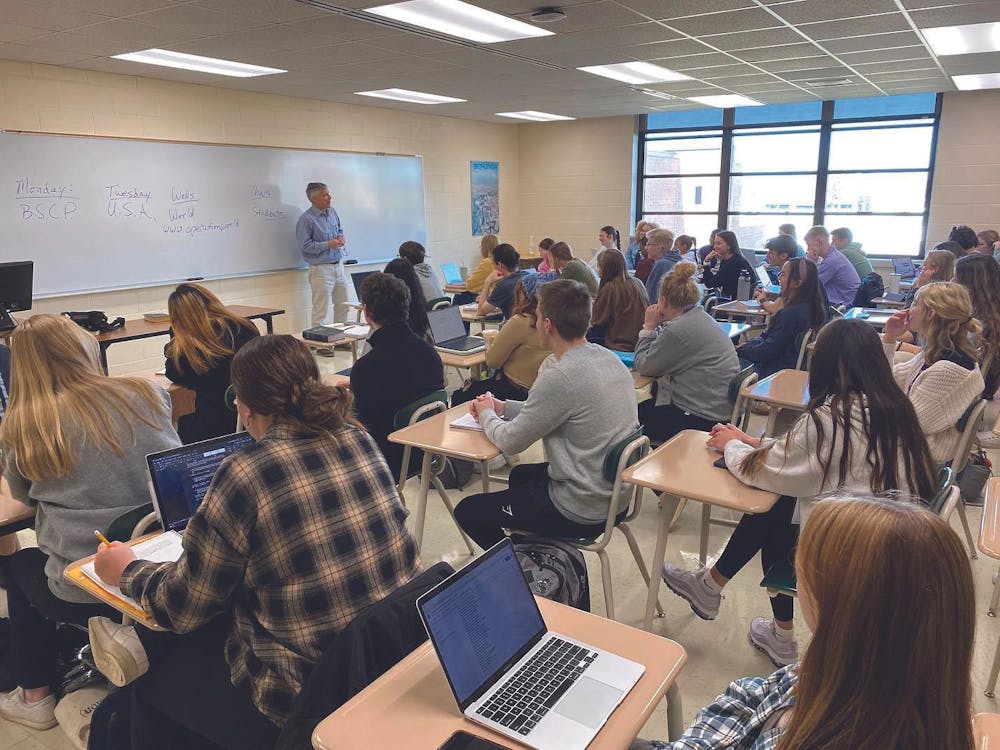Taylor’s incoming class of 2023 has a high school GPA higher than the university average. According to Education Next, this is consistent with recent trends of increasing student GPAs at universities and colleges around the country.
The incoming class’s high school GPA average is 3.89, comparable to that of admitted students at Ivy League schools like Princeton University who, according to Be Varsity, has an average of 3.9.
Holly Whitby, Taylor’s vice president for enrollment and marketing, said the reason for higher GPAs depends on more than one influence. The most prevalent reasons are the following: Taylor’s selective choice when admitting students, and students’ drive to succeed both socially and academically.
“Students, when they start looking for a college, they tend to look for certain attributes,” Whitby said. “Research shows that when a student is looking for a college, they're not just looking for the educational benefits or the degree, they're looking for an affiliation.”
Another factor for students when searching for colleges is financial aid. Taylor provides incentives for students with high GPAs and test scores in the form of tiered academic scholarships.
A student who has higher SAT and ACT scores is more likely to receive higher scholarship dollars from the university, ranging from $9,000 to $20,000. Last year, 99% of Taylor students received some amount of financial aid. For some students that struggle academically, it can become challenging to attain grades and test scores high enough to be considered for financial aid.
“It could make a difference sometimes if you are not hitting a particular level on an academic scholarship scale, it becomes hard to afford Taylor,” Whitby said.
Taylor students don’t just want to be within a Christian community or to succeed socially, they want to find their community, Whitby said. The Taylor community affects students greatly. It is one of the reasons its 91% retention rate is higher than other comparable universities.
Taylor’s trend of attracting quality students is not unique to academics. In September, the National Association of Intercollegiate Athletics (NAIA) announced that Taylor had achieved a GPA of 3.0 and above for all varsity athletics for the 11th year in a row.
Kyle Gould, director of intercollegiate athletics, said this was a great accomplishment. The athletic department desires for their student-athletes to match the university’s high GPA, which is already a trend for other students across campus.
“We have a long history of our coaches recruiting high school students who are prepared to succeed at Taylor and are blessed with a faculty that is supportive of their academic goals and willing to work with them when their schedules require some adjustment,” Gould said. “These two things have led to some great academic outcomes and an athletic department GPA that routinely matches or even exceeds the overall university GPA.”
Natalie Young, the associate director for intercollegiate athletics and senior woman administrator, recognized that when Taylor attracts good students, it leads to Taylor athletics doing the same.
Coaches make it clear to athletes that it is a priority to succeed in the classroom and beyond, Young said.
Student-athletes are not only eager to succeed in their respective sports but are also called to hold themselves to a higher standard. Athletes and coaches see the baseline requirement for athletic eligibility and seek to go above and beyond that requirement, Young said.
There is also a need to incorporate faith into athletics,and to fellowship with teammates and coaches. This friendship and fellowship improves relationships within and outside of athletics, translating to a stronger athletic-based community at Taylor.
“Every coach has their own kind of discipleship plan and they look very different; some will heavily involve traveling and mission trips,” Young said. “Some will have monthly or biweekly Bible studies, they'll have accountability groups, books, studies — all types of different things.”
Unfortunately, it is not uncommon for student-athletes’ GPAs to fall when they are without peer and coach accountability outside of seasonal gatherings and practices. Being involved with athletics as a student creates a type of rhythm within busy schedules. There can be a disruption when the pattern of practices and team activities stops for the season.
Young said that Taylor students are different from student-athletes at other schools and she feels privileged to be able to work with students who have such a high academic caliber.
“I think that the pedigree of a Taylor student-athlete is different when you step foot off of Taylor's campus,” Young said. “We're engaging other student-athletes at peer institutions and I think that the high caliber [of] student-athletes that we are privileged to work with, shows up in a lot of different ways.”





